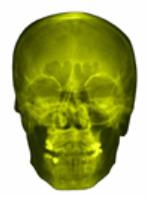Physical Literature
dal 9/12/2004 al 10/1/2005
Segnalato da
Martin Sexton
James Cauty
Ronnie Kray
Count Rodo
Rod Dickinson
Alex De Cadenet
Jamie Reid
The Prada-Meinhof Gang
Stewart Home
Chris Dorley-Brown
9/12/2004
Physical Literature
T1+2 Gallery, London
Downstairs: (m)other

Martin Sexton - Writer, Artist
James Cauty - Blacksmoke, Artist
Ronnie Kray - Artist
Count Rodo - Artist
Gay Stalker Vs Dwarf DJ - Entities
Rod Dickinson - Artist
Alex De Cadenet - Artist
Jamie Reid - Artist
Aaron - Messiah
The Prada-Meinhof Gang - Art Collective
Every human being is an artist - Joesph Beuys
Every human being carries a myth - King Arthur Pendragon
Illusion is sacred - truth profane - The @mbassadors
Downstairs at t1+2:
(m)other
For the present exhibition at t1+2 Artspace the novelist, filmmaker, critic, musician and performance artist Stewart Home has brought together the results of his own researches into his mother's mysterious death in 1979 with the work of the photographer and video artist Chris Dorley-Brown.
Have you ever lost your sense of wonder?
Fed up with the art machine? Modern literature fills you with inertia?
All entertainment¹s, all drugs, none of them, any of them, no longer
work? Can things get any better, improve? Or will it all get a lot worse?
Has the art critique become too philosophical, no action? Where is the spirit
and was there ever one?
Some kind of guiding light? Or is this too many questions?
Then along comes another conceit, yet more artifice: 'Physical Literature'
Or maybe not, maybe it is all beautifully real, all true, and all pure:
Stonehenge, Camelot, aliens, immolating a million pounds, Jesus Christ
walking amongst us, even an iconic, violent 60's criminal turning out
to be a great artist? And what exactly does this all have in common - and
why now?
Relax, don't think about it too hard; look: it has text, it has a
soundtrack, it has moving images, it has UFO's, prophets, stars,
Tutankhamun, a big painting, beautiful girls and a rebel without
applause.
Downstairs t1+2 (m)other
For the present exhibition at t1+2 Artspace the novelist, filmmaker, critic,
musician and performance artist Stewart Home has brought together the results of
his own researches into his mother's mysterious death in 1979 with the work of
the photographer and video artist Chris Dorley-Brown.
'The running story in the Kensington News at the end of 1979', reports Home,
'was the hunt for a school boy. However what most interests me in the 7 December
1979 edition is a tiny paragraph tucked at the bottom of an inside page. Under
the heading ‘Found Dead’ are these words: 'Julia Callan-Thompson was found dead
in her basement flat in Cambridge Gardens on Sunday December 2. Police say there
were no suspicious circumstances.' There was no follow-on reporting in
subsequent editions of the newspaper.' Home's interest in this item is that
Julia Callan-Thompson was his mother, a woman who had had a 'long involvement
with bohemianism and the drug subculture' - 'her biography is also closely bound
up with many of the things that continue to fascinate all of us about the
swinging sixties. My mother had an action packed and sometimes troubled life.
She was thirty-five when she died...in the back basement flat at 104 Cambridge
Gardens on 2 December 1979.'
Employing similar poses to those found in would-be promotional photographs of
Home's mother taken by Carla Hopkins in 1966, Dorley-Brown has photographed Home
himself, merging together the two sets of images so as to produce a series of
composite portraits of Julia aged 22 and her son Stewart aged 42.
A further contribution to the examination of Julia's death takes the form of
Home's film The Eclipse and Re-Emergence of the Oedipus Complex. This is an
intensely personal work which brings together Home's cultural theory and his own
family history. Avant-garde techniques and the avant-garde obsession with death
are interwoven with the life and death of Home's mother. Images of Julia working
as a fashion model and club hostess are cut against an at times deliberately
disassociated soundtrack that uses stories about her (including her involvement
with beatnik and hippie countercultures, heroin addiction and Julia's quest for
spiritual enlightenment, and especially her mysterious death in 1979), in an
exploration of the limits of documentary film and of how the avant-garde is both
an _expression of love and of loss. The film also implicitly comments upon how
key aspects of radical Lettrist cinema of the early 1950s were commercialised in
the late works of French filmmakers such as
Chris Marker, Jean-Luc Godard and Alain Resnais.
Accompanying these maternally-transfixed depictions is Dorley-Brown's
sixtysix-ninetynine, a companion piece to Michelangelo Antonioni's seminal 1966
film, Blow Up. Widely regarded as a microcosmic depiction of "swinging" London,
the original film, documenting 24 hours in the life of London's hippest fashion
photographer (played by David Hemmings) here acts as a foil to Dorley-Brown's
remake of this modern classic. Dorley-Brown's latter-day reconstruction involved
him in filming at the exact London locations used in the original, employing no
actors but reconstructing, shot by shot, Blow Up's complex and notorious park
sequence. Devoid of dialogue, sixtysix-ninetynine employs the soundtrack of
Antonioni's film, without edits and in real time. In ghosting this important,
strangely loaded work Dorley-Brown attempts to unearth what has happened to the
mythologised landscape of sixties London during the 33 years since Blow Up was
made.
t1+2 artspace is independent, self-funded and run by artists. Located near Brick Lane in east London the size allows for largescale installations not usually possible outside the major commercial galleries
t1+2 artspace
4 Steward Street London E1
Opening Hours: 1pm to 6pm, Wednesday to Sunday



